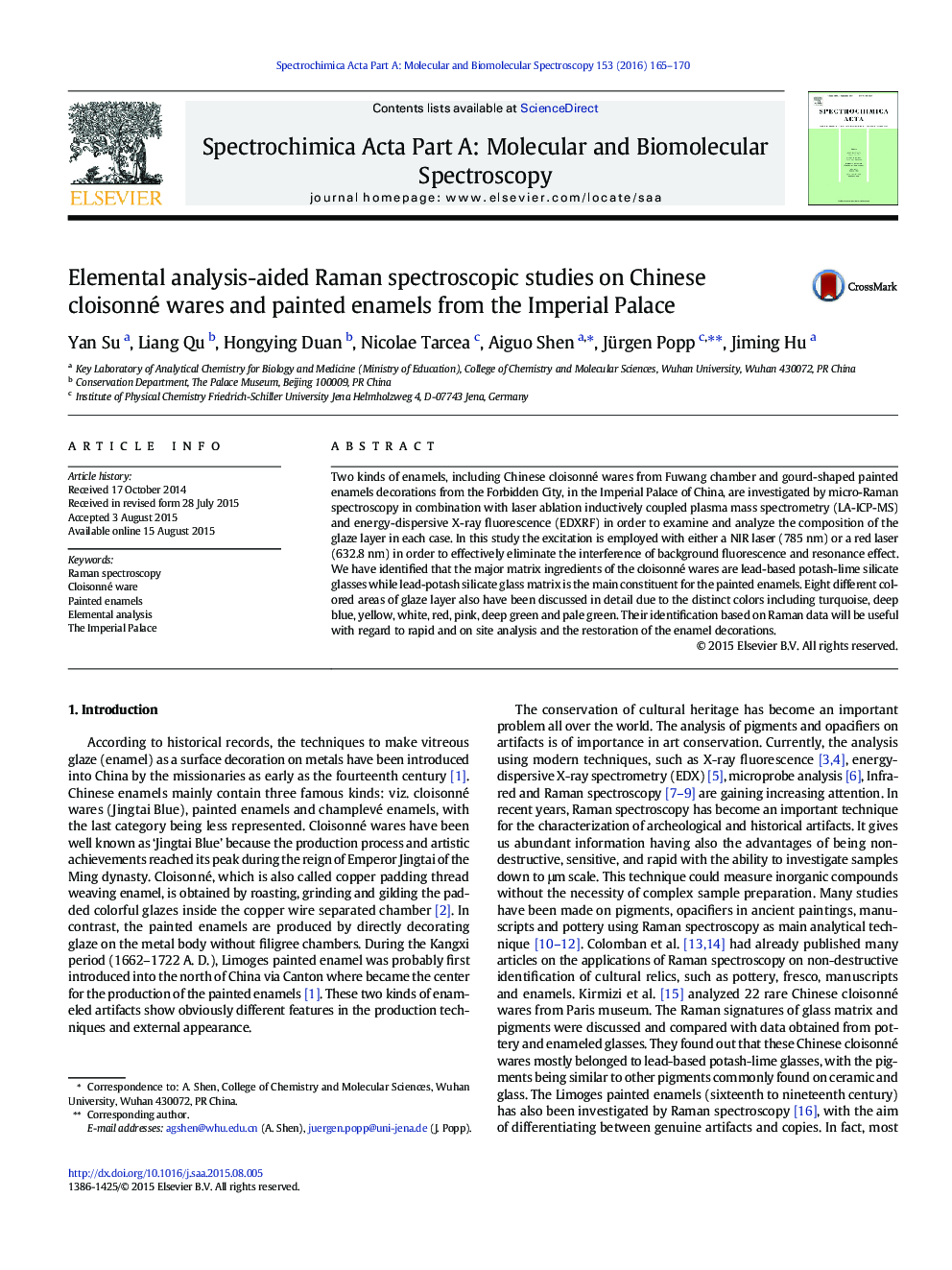| Article ID | Journal | Published Year | Pages | File Type |
|---|---|---|---|---|
| 1228712 | Spectrochimica Acta Part A: Molecular and Biomolecular Spectroscopy | 2016 | 6 Pages |
•A non-invasive and comprehensive analysis of Chinese enamels from the Imperial Palace of China.•The major ingredient of the cloisonné enamel and the painted enamel was discussed for the first time.•Elemental analysis-aided Raman spectroscopy is useful with regard to the restoration cultural relic.
Two kinds of enamels, including Chinese cloisonné wares from Fuwang chamber and gourd-shaped painted enamels decorations from the Forbidden City, in the Imperial Palace of China, are investigated by micro-Raman spectroscopy in combination with laser ablation inductively coupled plasma mass spectrometry (LA-ICP-MS) and energy-dispersive X-ray fluorescence (EDXRF) in order to examine and analyze the composition of the glaze layer in each case. In this study the excitation is employed with either a NIR laser (785 nm) or a red laser (632.8 nm) in order to effectively eliminate the interference of background fluorescence and resonance effect. We have identified that the major matrix ingredients of the cloisonné wares are lead-based potash-lime silicate glasses while lead-potash silicate glass matrix is the main constituent for the painted enamels. Eight different colored areas of glaze layer also have been discussed in detail due to the distinct colors including turquoise, deep blue, yellow, white, red, pink, deep green and pale green. Their identification based on Raman data will be useful with regard to rapid and on site analysis and the restoration of the enamel decorations.
Graphical abstractFigure optionsDownload full-size imageDownload as PowerPoint slide
